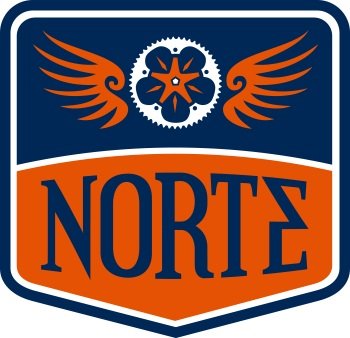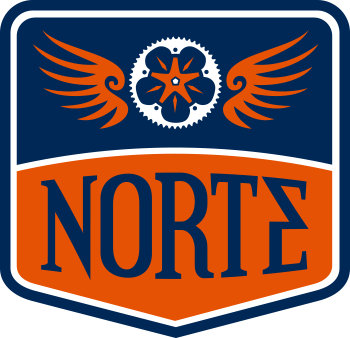How to Teach a Kid To Ride a Bike
Learning how to ride a bike is a lifelong skill and a major milestone for kids. It’s an incredible accomplishment and an opportunity for parents to help shape a positive experience for their kids at a pivotal age. No two kids learn the same way or at the same pace, but we have developed a few ways to keep the process fun!
Tips to Get Your Child Riding
The most important factor in learning to ride a bike is timing.
Don’t push your child to learn to ride a bike before they are ready, whether it’s a balance bike or a bike with training wheels. One negative experience early can make learning stressful or intimidating.
Go into “bike practice,” ready to acknowledge when it’s too much, and have a plan to take breaks before the child gets upset. Start the ride by telling your child what you’ll do when it’s over, even if it’s just heading back inside. This makes ending the ride or practice less of a sore point if it doesn’t go well; it just means you’re done for the day!
Learning to ride isn’t a linear process. Expect some regression throughout the first ride and in subsequent lessons, too. Think about progress in weeks or months, not hours or days.
When Are Kids Ready to Ride a Bike?
There’s no ideal age for learning to ride a bike. Some kids are eager to learn at younger ages, while others express little interest. Physical limitations, such as mental and physical development milestones, occur at different ages for everyone.
The best time to teach bike skills is when your child voices interest; when they do, be ready!
Are Balance Bikes Better Than Training Wheels?
The “training wheels vs. balance bikes” debate is hotly contested among parents. In our experience, balance bikes are a great way to get kids comfortable balancing and coasting, which shortens the learning curve of learning to pedal. That said, some younger kids aren’t interested in riding until they’re older, at which point many of their peers are already pedaling. In that case, training wheels are the better option.
Support your child’s interest in either bike. We offer a kid’s bike library to help them find the wheels they need to start riding with confidence.
Bike Fit Matters
It’s easy to assume that since your child will only have their first bike a season or two, bike fit won’t make a big difference. It does! Make sure your child can stand over the top tube with both feet firmly and evenly on the ground. A well-fitted bike should will:
Allow the child to reach the handlebars comfortably
Allow the child to squeeze the hand brake
Keep the child’s knees from hitting the handlebar (if they do, the bike is too small)
Remember that getting a bike that is a little small is much better than a bike that is too big!
Ensure Proper Helmet Fit
From Day One, teach the importance of wearing a helmet. Require them to wear their bike helmet every time they ride, even if they’re just riding to the end of the driveway and back. Wearing a properly fitted helmet can reduce the risk of brain injury by up to 85%.
Make sure your child’s bike helmet:
Sits level on their head, ideally in the middle of their forehead
Straps are evenly adjusted
The chin strap is snug but not tight; you should be able to fit 1-2 fingers between the chin and the strap itself
Learning to Ride: Before the Lesson
Start by running through the child’s bike. We recommend checking the tire pressure, lowering the seat slightly, and making sure the brakes are working properly (if applicable).
While teaching your kid to ride their bikes on a grassy lawn is tempting, thick grass makes it hard to coast. Opt for a large paved surface without traffic so they aren’t worried about cars or going “off-road” before they’re ready.
Learning to Ride a Bike Without Pedals
Balance bikes allow kids to focus on staying upright and learning to transfer their weight. In many cases, learning how to get on and off the bike is the hardest part. Show them how to lean the bike over, step over it, and pull it up by the handlebars. Practicing this in the grass is okay, but have a nice slice of pavement nearby for riding.
We play two games to help kids master the balance bike.
Big Steps - Encourage kids to take big steps by alternating feet. Some folks call this “Moon Walking”, because it looks a bit like an astronaut striding over a lunar surface.
Big Hops - Encourage kids to push off with both feet simultaneously. This is the best way to get riders to coast; with both feet off the ground, they have to!
Teach kids to steer by setting up a simple obstacle course. Start with sidewalk chalk or small cones and create a fun loop of animal drawings, healthy foods, or whatever interests your child. Feel free to make the course more challenging as their skills develop.
Learning to Ride a Bike with Pedals
Even experienced, confident balance bike riders can have a tough time transitioning to pedals. Start by ensuring they can get on the bike smoothly before you practice starting, stopping, and turning.
Getting Started
Making the switch to a pedal bike is all about pedal awareness. From a stopped position, show kids the “starting position” or “power position.” Put the pedal on their strongest side at the 2-3 o’clock position as viewed from the side of the bike. If you aren’t sure which leg they are most confident in, watch them straddling the bike for a few minutes; they’ll usually lean on one leg more than the other.
Teach kids to push off hard with their pedal or use their grounded leg to push off. Make it clear that the harder they start, the easier it will be to pick up momentum. It’s okay to give them a small nudge, but try not to push too hard or hold them up; this may actually slow the learning process.
Leaning and Turning with a Pedal Bike
Pedal awareness is equally important once they’re on the move. Use sidewalk chalk or cones to create an obstacle course and remind kids to keep their inside foot level or up through turns. As they gain confidence, consider tightening the corners to instill that sense of balance necessary to ride tighter circles.
Always Enjoy the Ride
Whether your child learns on a balance bike or bike with training wheels, at home, or at a Norte Balance Bike Club meet-up, only one thing matters: make learning to ride a bike fun! Never estimate the value of peer-led learning and keep the process social and low-pressure. Kids will almost always make it clear when they’re ready to ride a bike - and when they’re not.
For more tips on teaching your kid to ride or get into bikes, join our newsletter. Learn more about Norte Youth Cycling and consider supporting our youth cycling programs today.


